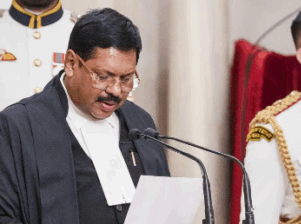Justice Bhushan Ramkrishna Gavai has officially taken oath as the 52nd Chief Justice of India (CJI) on May 14, 2025. His appointment is historic, as he becomes the first Buddhist and the second Dalit to hold the country’s highest judicial position. His elevation reflects India’s commitment to diversity and representation in the judiciary.
Who is Justice BR Gavai?
Justice Gavai hails from the Buddhist community, making his appointment a landmark moment for minority representation in India’s legal system. As a member of the Scheduled Castes (SC), he follows in the footsteps of Justice KG Balakrishnan, the first Dalit CJI. His journey from practicing law in Maharashtra to serving as a Supreme Court judge since 2019 showcases his deep expertise in constitutional matters.
Significance of His Appointment
- Representation & Inclusivity: His elevation reinforces India’s judicial diversity, giving voice to historically marginalized communities.
- Judicial Leadership: As CJI, he will oversee critical cases, including those related to social justice, governance, and constitutional rights.
- Legal Expertise: Justice Gavai has played a key role in verdicts concerning Article 370, electoral bonds, and reservation policies.
Responsibilities of the Chief Justice of India
- Master of the Roster: Allocates cases to benches and presides over constitutional matters.
- Judicial Leadership: Guides key legal interpretations and Supreme Court rulings.
- Administrative Authority: Oversees court functioning and judicial appointments.
- Advisory Role: Provides legal counsel to the government on constitutional issues.
Conclusion
Justice BR Gavai’s appointment as the 52nd Chief Justice of India is a significant milestone in the country’s judicial history. As the first Buddhist and the second Dalit to hold this office, his tenure is expected to influence legal precedents, governance policies, and social justice rulings. His leadership will be closely observed as India navigates key constitutional challenges in the coming years.

